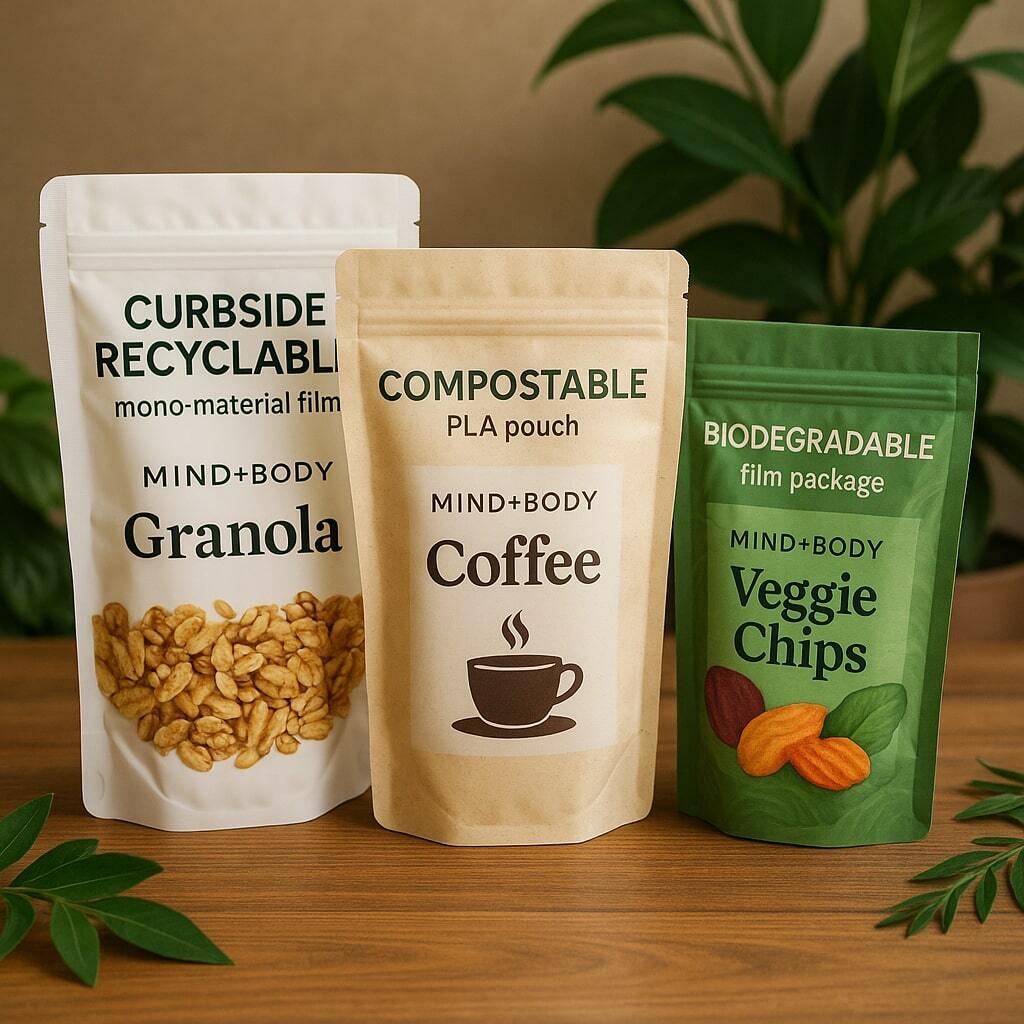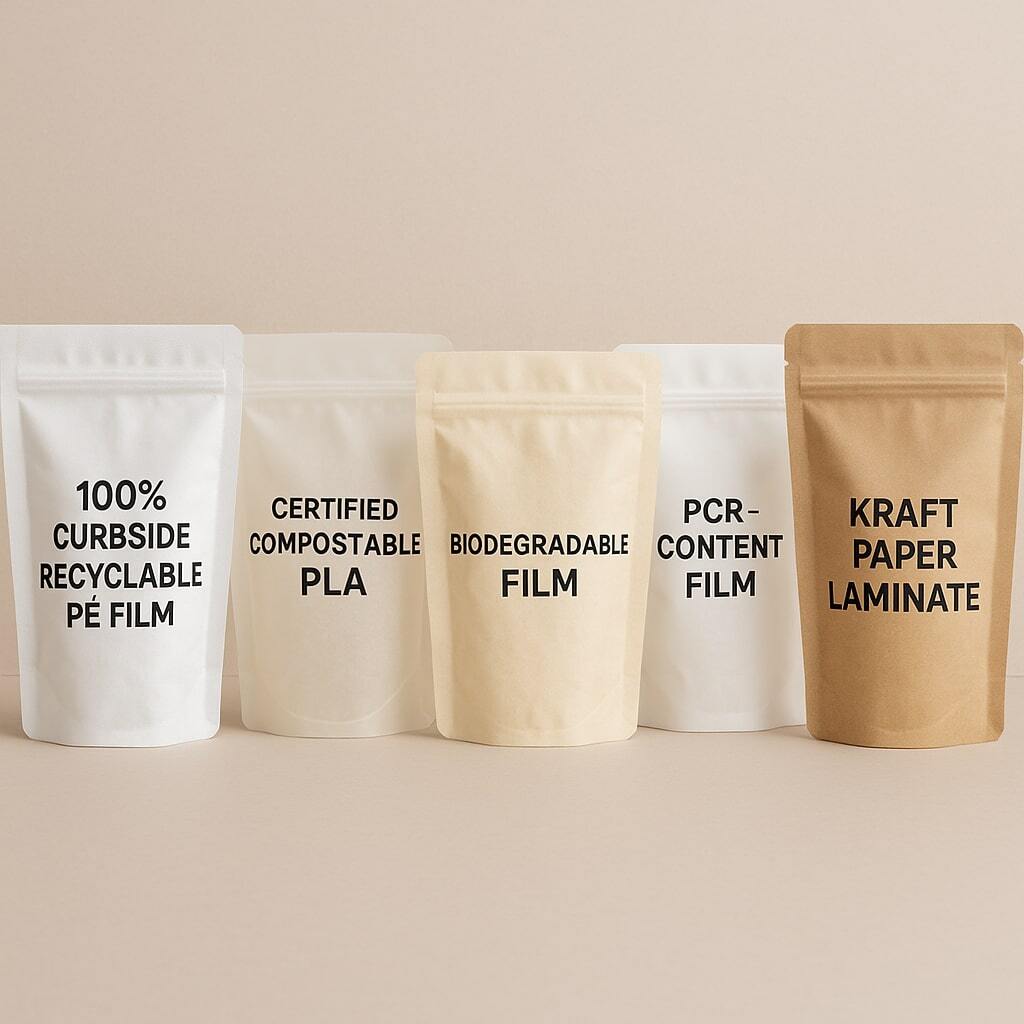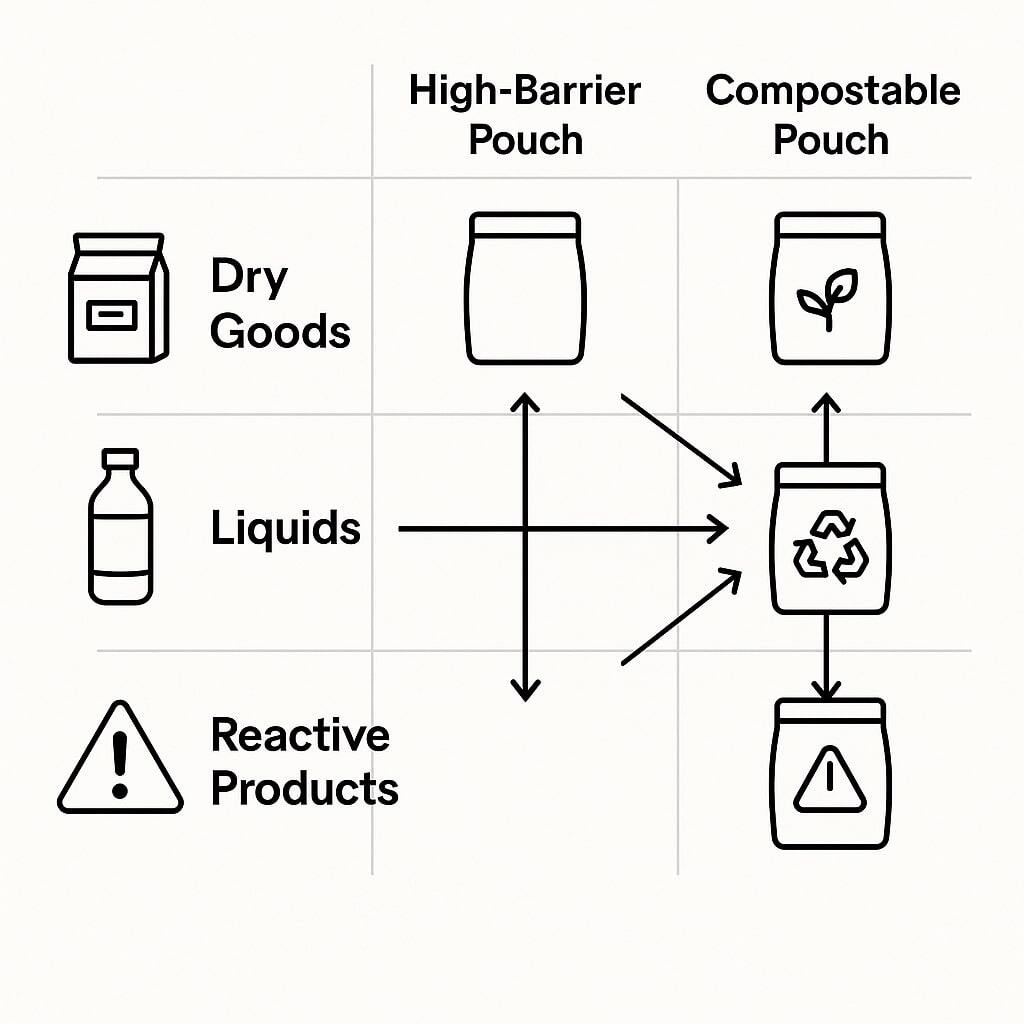1. What Is Sustainable Flexible Packaging?
Sustainable flexible packaging is packaging designed to minimize environmental impact across its entire life cycle—from raw material sourcing and manufacturing to distribution, use, and disposal.
- Material reduction (using less overall material)
- Recyclability (especially curbside recyclable options)
- Compostability or biodegradability
- Renewable resource usage
- Energy-efficient production
Flexible formats, such as stand-up pouches, are leading this evolution by offering high performance with dramatically less material than rigid alternatives.






